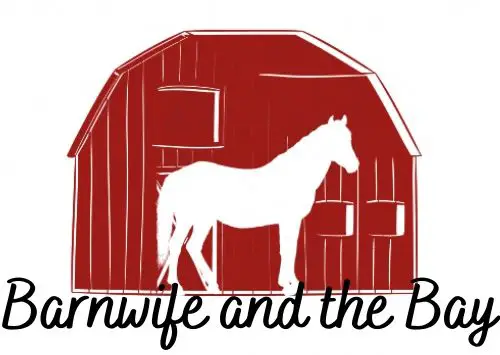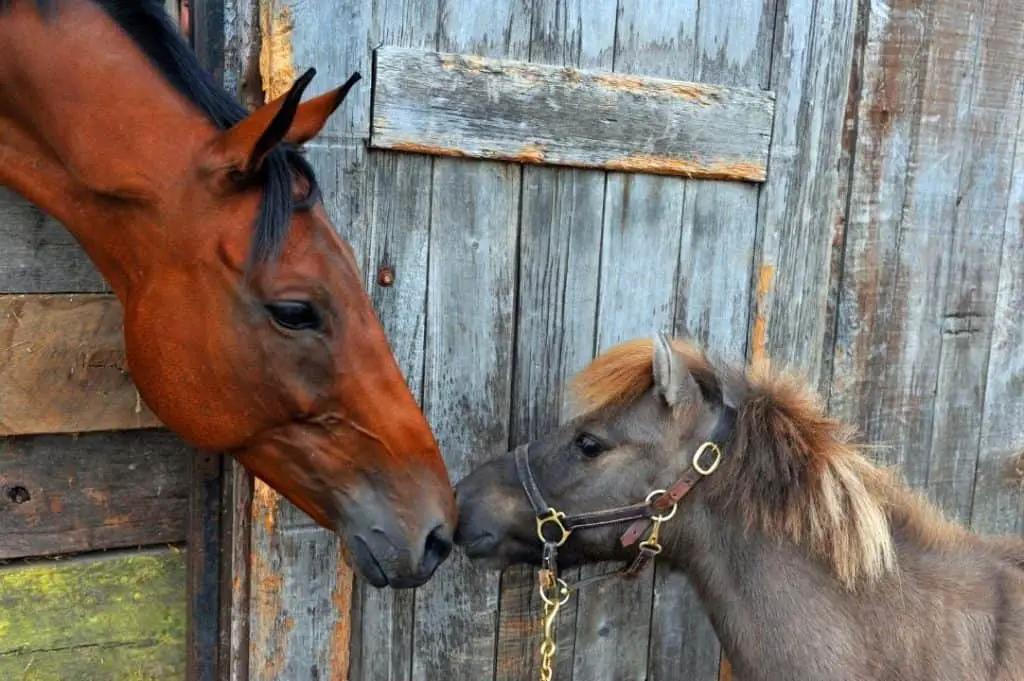
Horse height can be somewhat confusing. Where do you measure to, and what is a hand anyway?
In this article, I’ll go over the reasons to know your horse’s height, how horse height is measured, and how to take the the most accurate measurement.
I’ll also answer some important questions about horse growth, and tell you what veterinary science has to say to some horse world myths.
3 Good reasons to measure your horse’s height
Find out if you have a pony or a horse
The label “pony” applies to equines of certain breeds, like Pony of the Americas (POA), Shetland Pony, Welsh Pony, and many others. But it also applies to equines of certain sizes, no matter the breed. Even if you have a horse that’s not a pony breed, they might be pony size, if they are under 14.2hh. Anything over 14.2hh is considered a horse.
Know how your horse compares in size to other horses
Sometimes it’s helpful to be able to visualize if your horse is bigger or smaller than another horse without seeing them next to each other.
If you have a young horse, find out if they’re still growing
Measuring your young horse often can tell you if their height has plateaued.
A young horse is defined for purposes of nutrition and growth as a horse under 2 years old. All horses reach their full height, or very nearly so, by 2 years of age. There is very little variation in this timing between breeds (even draft breeds are pretty much done growing taller by age 2). (Source: this scientific literature review). After that they will continue to gain weight and muscle mass, and growth plate fusion continues over the next 1-2 years (source: Clinical Radiology of the Horse).

Chart credit: Marcia Hathaway PhD, University of Minnesota
How horse height is measured
Horse height is measured to the top of the withers, as this is the highest point that doesn’t change too much depending on the horse’s posture.
The unit of measurement for horse height is the hand (abbreviated hh, for hands high). A hand is equal to 4 inches.
To get a horse’s height in hands, just measure in inches and divide by 4. Each additional inch after the whole number of hands is represented by a number after the decimal point. Therefore a pony measuring 57 inches is 14.1hh. A horse measuring 59 inches is 14.3hh and one that measures 60 inches is 15hh.
In centimeters, a hand is 10.16cm.
Tools to measure horse height
- Horse measuring stick
If you don’t have a horse measuring stick you’ll need:
- Straight stick or pole
- Level
- Pencil or marker
- Tape measure
You might also need a helper to hold your horse if you’re not 100% confident they’ll stand still to be measured.
How to take the measurement: Step by step
1. Stand your horse on level ground
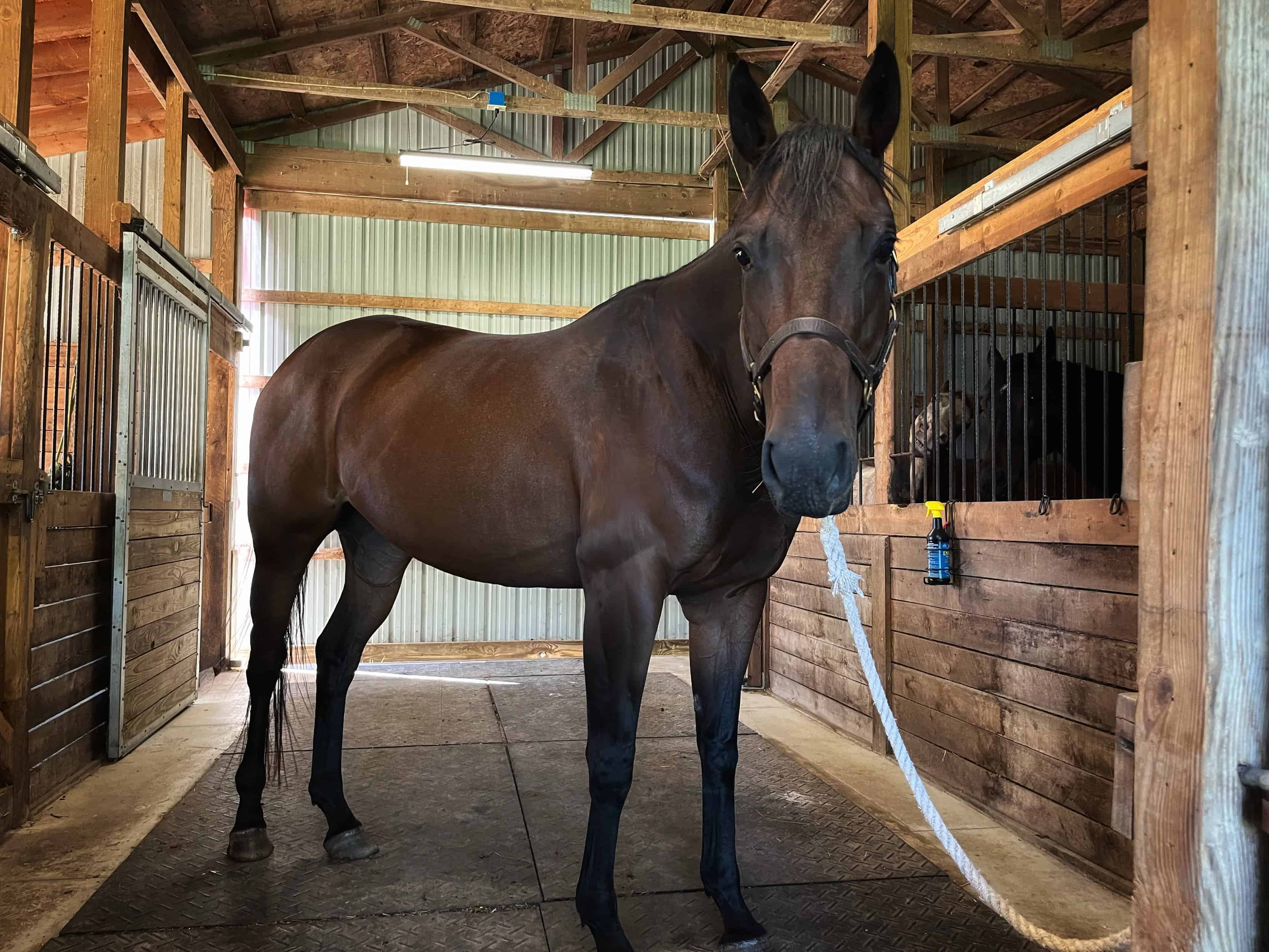
The barn aisle is a good place to stand your horse to measure them.
2. Make sure your horse is standing square

You’ll get a more accurate measurement if the horse’s feet are placed roughly at the 4 corners of a rectangle and he’s not resting a hind leg.
3. Find the highest point of the withers
The horse’s withers are the part of his back just behind the neck where the back curves up between the shoulder blades.
4. Using a horse measuring stick:
Place the end of the stick on the ground just behind the horse’s front leg.
Slide the top slider portion down until it rests on the top of the withers and read the measurement.
4. Using any straight stick, level, and measuring tape:
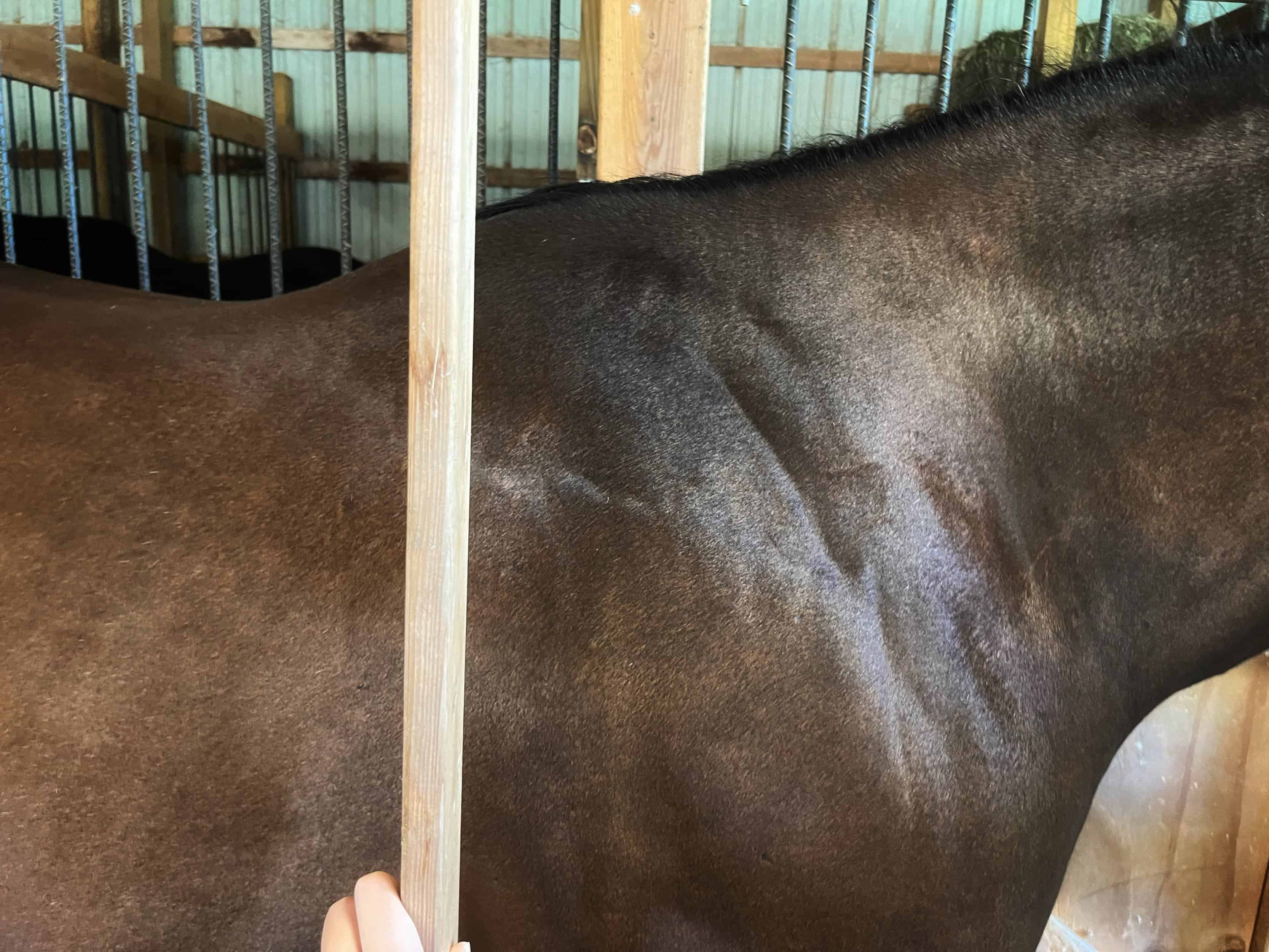
a. Place the end of the stick on the ground just behind the horse’s front leg. Here I’m using a narrow piece of lumber I had around the barn. Anything straight and taller than your horse will work. Make sure the stick is straight up and down.
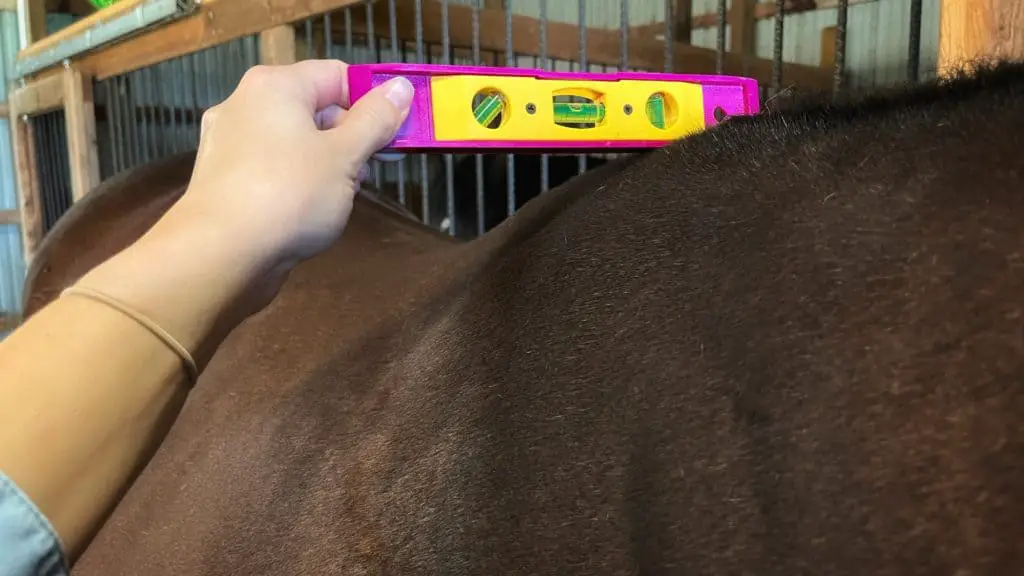
b. Place the level on the top of the withers and level it.
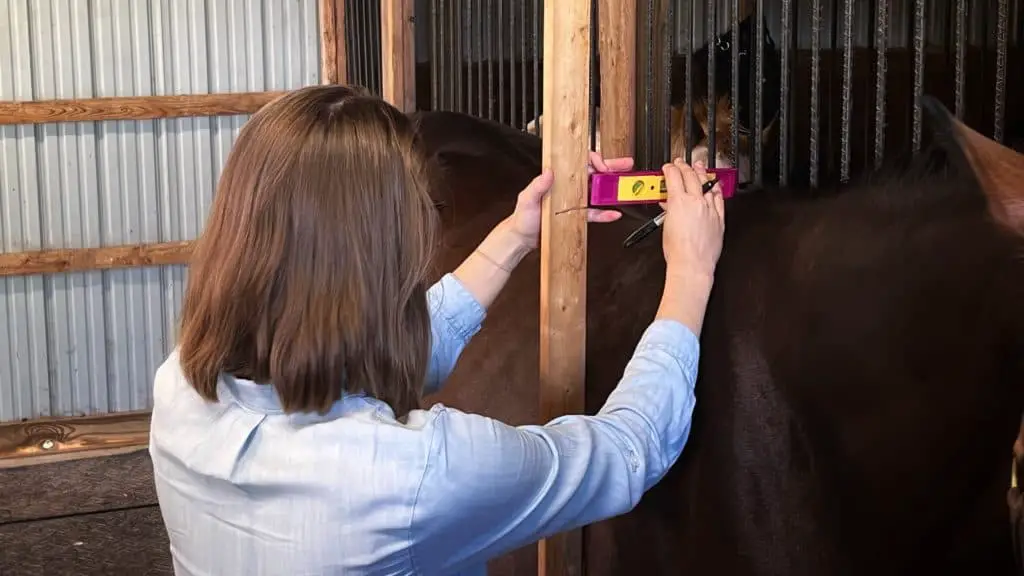
c. Mark where the bottom of the level comes to on the stick.

d. Measure the stick up to the mark.
If you measured in inches, divide by 4 to get hands. If you measured in centimeters, divide by 10.16.
It’s as simple as that!
This method will give you more accurate height measurements than simply dropping a measuring tape next to your horse’s withers, but if you’re in a hurry, you can do that too and get a good idea of their height.
Some Frequently Asked Questions about horse height and growth
When is it safe to start training a young horse?
There is a great debate among horse people about when to start training a young horse. Many contend that you should not start a horse in ridden work before a certain age because you are sure to cause long-term damage to growing body structures. There is usually no evidence given for this view.
On the other hand, research on racehorses has shown that early training actually aids in priming the horse’s bones to model and remodel themselves for the work that will be demanded throughout life. In the studies, horses who began training earlier suffered fewer injuries and had long racing careers. This video lecture by Dr. Larry Bramlage outlines some of the research.
There is ample evidence in the scientific literature that appendicular growth plates, that is growth plates in the legs, are closed in the majority of horses of all breeds by age 2-3.
Some growth plates in the spine may take longer to close even though the back is done growing. There is no evidence that I’m aware of that waiting for closure of these last growth plates is beneficial in any way. It does not prevent injury or contribute to the health and longevity of the horse.
It goes without saying that in the beginning stages of training a young horse, work is always increased gradually. You’re never going to go from zero training to racing, jumping 1.5m, or sliding stops.
The gradual increase in work is what trains the bones to build themselves for their job. Based on the evidence, starting a horse before age 2 with groundwork and slowly increasing ridden work at age 2 will not cause damage to body structures and may set the horse up for a lifetime of healthy partnership.
This review article is a good resource for those looking to understand equine skeletal maturity more thoroughly.
This blog post written by the veterinarians (and their cat) at Springhill Equine is also a great read to understand more about the young horse training debate.
How tall will my foal grow to be?
It’s impossible to predict too precisely how tall an individual horse will grow to be. However, it has been shown that when they are born, foals are approximately 60% of their mature height. At 2 years old, young horses have usually achieved 98% of their final height.
Is a 2 year old horse still growing?
At 2 years old, a horse will most likely not grow any taller. Sometimes a nutritional deficit early in life can delay reaching the final height until a bit later.
Like what you’ve learned about horse height? Check out my articles about horse weight:
